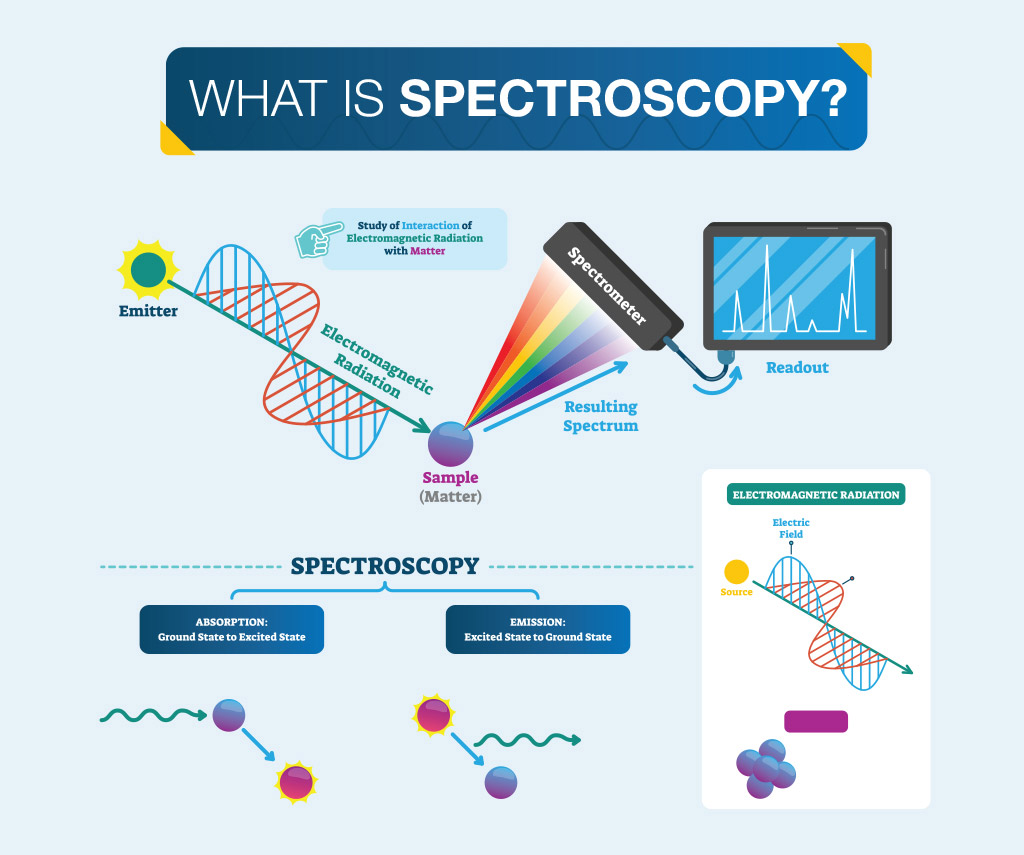Spectroscopy is the study of the interaction between matter and electromagnetic radiation. It is used to determine the composition, structure, and properties of matter. Spectroscopy dates back to the early 19th century, when it was used to study the solar spectrum. In the late 19th century, spectroscopy was used to study the emission lines of atoms. The development of quantum mechanics in the early 20th century led to the development of new types of spectroscopy, such as electron spin resonance spectroscopy and nuclear magnetic resonance spectroscopy.
Today, spectroscopy is used in a wide variety of fields, including astronomy, chemistry, physics, materials science, and engineering. Spectroscopic techniques are used to study objects ranging from galaxies to molecules. For example, astronomers use spectroscopy to examine the composition of stars and planets. Chemists use spectroscopy to identify unknown compounds and determine their structure. physicists use spectroscopy to study the properties of atoms and particles. And materials scientists usespectroscopy to characterize new materials.
There are many different types of spectroscopic techniques; each type is suitable for studying different kinds of samples and probing different kinds


